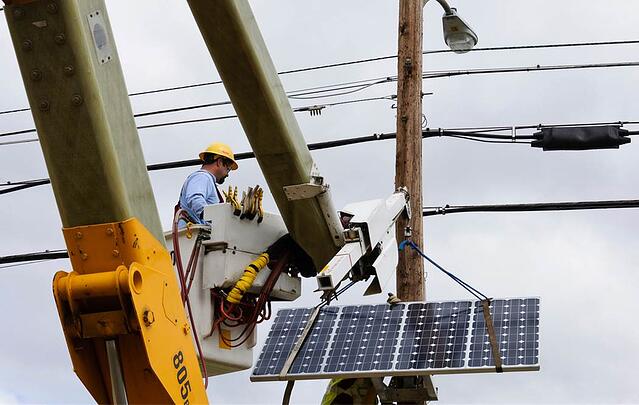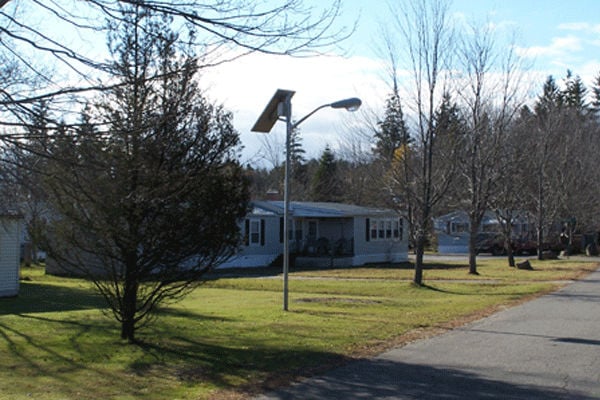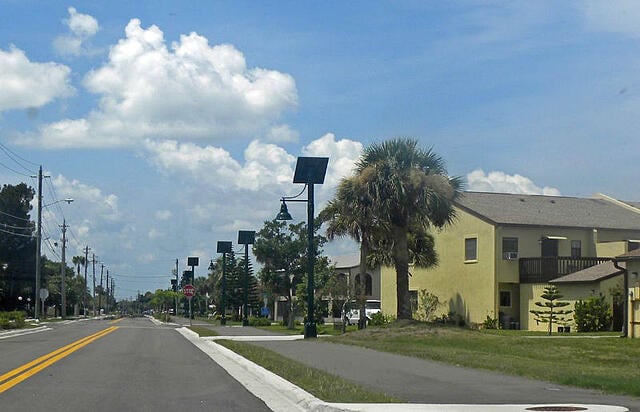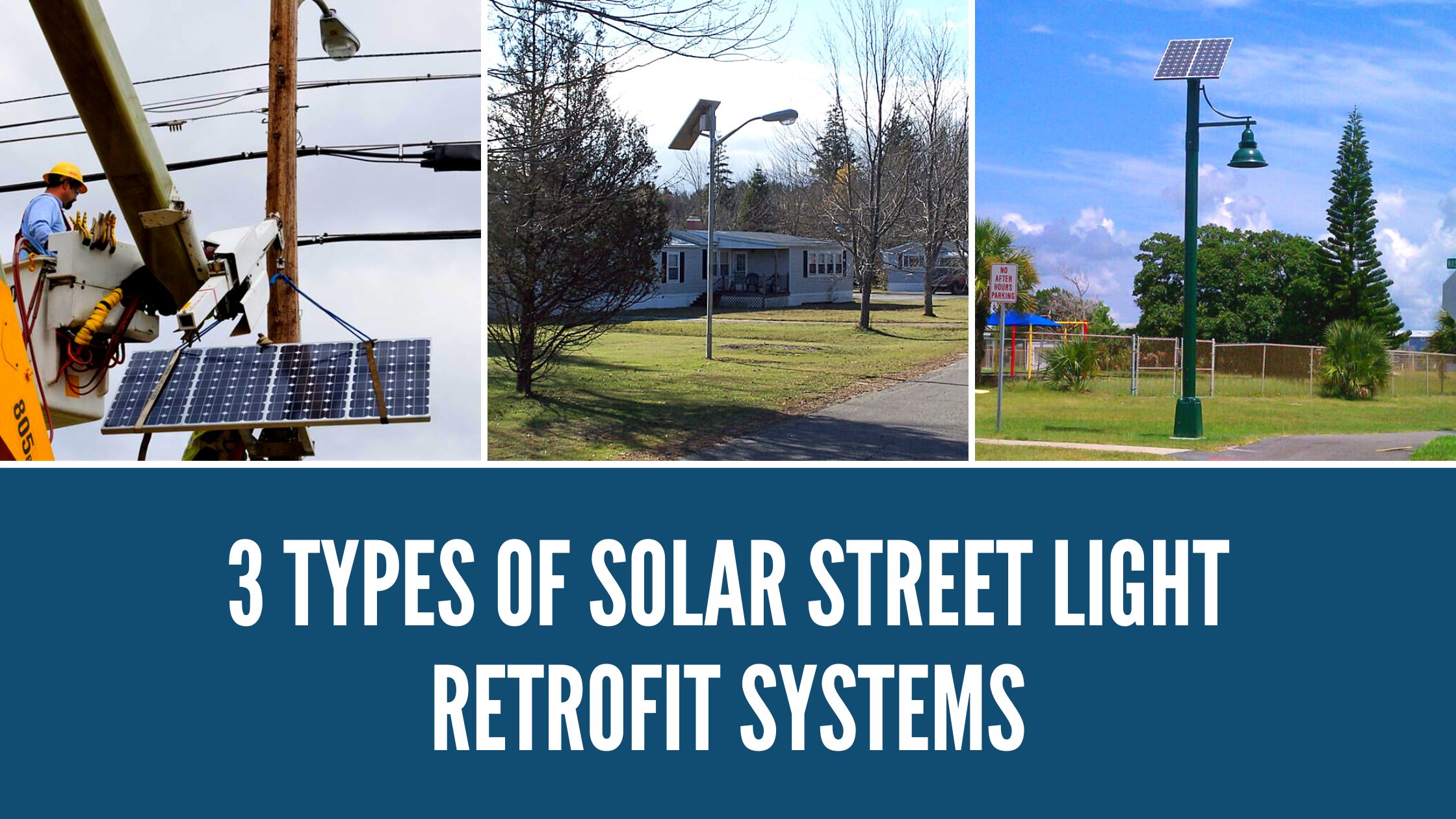So you are looking for a way to save money and go solar for your city or municipality; however, you don't know where to start. There are three main ways to retrofit an existing light to utilize solar. You can install a solar panel that feeds the grid during the day, you can take the system completely off-grid, or you can install a battery backup for times when the power isn't as steady as you'd like. All of these options have their pros and cons. Let's review them in this post and see which one works for you the best.
Grid Intertie Systems

The first type of solar street light retrofit system you can install would be a grid intertied system. This is the perfect setup if you want to offset some of the usage of that light, and possibly more, and save money on electricity. Look at what the state of New Jersey did with its light poles. They just installed a solar panel on all utility poles to help offset their energy usage across the state. This energy is then fed directly onto the grid power that exists on those poles.
Installing a solar panel on the existing poles to feed the grid during the day and then utilizing the grid power at night will help offset some costs and provide a green alternative. Depending on how much power you want to generate during the day determines the size of the solar panel to install. Work with a local electrical contractor to decide what you will need and the local power company to put on a special device that tracks your power generation. Also, make sure to switch to energy-efficient LED fixtures to maximize your savings.
Off Grid Systems

The second type of solar street light retrofit would be to take the systems off the grid completely by installing an off-grid solar-powered street light. This is the right choice when there isn't a viable electric line at the site anymore or a new installation where the light was previously forgotten, and extensive trenching would be required to make the light work again. Instead, replacing the pole with a new off-grid solar light may be the most economical choice.
These systems charge a battery assembly during the day to provide power to the light at night through a battery setup. The solar panel assembly works as a photocell to turn the light fixture on and off and typically provides five nights of autonomy. This setup is more expensive to purchase as you usually have to replace the pole, foundations, etc. but provides free energy for the life of the systems, typically 30 years or more, with only the batteries to replace every five to seven years.
Battery Backup Systems

Battery backup systems are the best of both worlds. With a battery backup system, you generate the power for the batteries primarily, typically smaller battery assemblies than complete off-grid systems, and feed excess power to the grid. The lights rarely operate off the battery, and the panels only recharge them when the storage levels drop.
The batteries can either run the lights for a set amount of time at night, followed by grid power for the remainder of the night, or only be utilized if there is a power outage in the area. This is a great idea for areas without reliable grid energy that suffers from brownouts or blackouts frequently. This setup can also work with a larger battery backup and a trickle charger to provide multiple-day storage like off-grid systems but only be activated in times of grid outages.
As you can see, there are pros and cons to each type of solar street light retrofit system. If you are looking to lower your power usage and costs, then using a grid intertie system will be the best way to go. If you have a fault in the line, then using an off-grid system may be your best choice. Finally, if you are dealing with frequent blackouts or brownouts, maybe having a battery backup for those times will be your best choice. Understanding the key differences is the best way to ensure you install the correct system for your needs.



